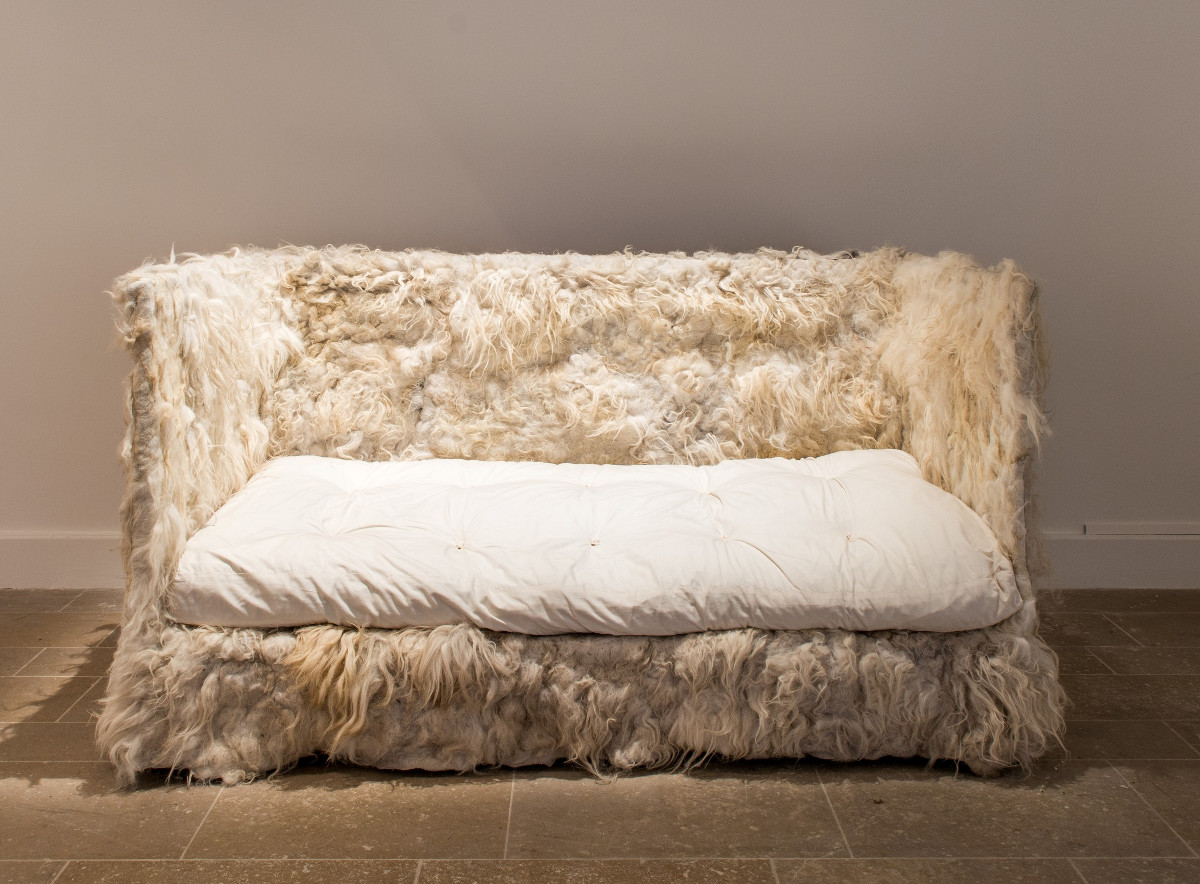Et si on s’était trompé? / What If We Got It Wrong?

The exhibition will be opened by writer and film-maker, Katherine Waugh on Friday 28 October at 7.00pm and will be followed by a gallery performance at 8.00pm by Softday (Seán Taylor and Mikael Fernstrom)
The exhibition is accompanied by a publication, produced by Centre Culturel Irlandais, with essays by Frank McDonald, Darragh McKeon and Katherine Waugh.
____
‘Let me get it right. What if we got it wrong?
What if we weakened ourselves getting strong?
What if our wanting more was making less?
And what if all of this wasn’t progress?’
Lemn Sissay, extract from What If
Et si on s’était trompé? / What If We Got It Wrong? is a group exhibition of Irish or Irish-based artists engaged in issues of climate change produced by the Centre Culturel Irlandais in the lead up to the international COP21 Climate Conference in Paris in December 2015. Earlier that year, President Michael D Higgins made his first major speech on the subject of climate change at the Summit of Consciences for the Climate in Paris, at the invitation of French President François Hollande. It is significant that both President Michael D Higgins and former president Mary Robinson, now UN special envoy for climate change, were prominent speakers at the summit, creating ‘an impression of Irish presidents, past and present, as a moral compass for Ireland and beyond’ (Lara Marlowe, Irish Times, 22 July, 2015), and marking Ireland’s significant contribution to the global dialogue on climate change.
The exhibition Et si on s’était trompé? / What If We Got It Wrong? explores the premise that progress as we know it may have diminished us, making us weaker; that somehow we might have taken a wrong turn and we may have made a serious mistake. The exhibition is prefaced by a newly commissioned fictional essay by novelist Darragh McKeon whose debut novel All That is Solid Melts Into Air looked at the devastation caused by nuclear pollution.
‘Radiation is the ultimate assassin. Silent, invisible, tasteless, formless, odourless. It eviscerates the human body, devising sadistically imaginative forms of suffering. And it will keep on doing so for as long as we inhabit the earth. And we create it to boil water.’
Darragh McKeon, All that is Solid Melts
Lemn Sissay’s What If? came about as the result of a journey to the Arctic, the frontline of climate change. It was commissioned in 2009 to mark the 150th anniversary of the publication of Darwin’s The Origin of the Species. George Bolster’s film Un/natural History: Drowning Captiva, draws on Darwinian ideas that the human race is ceasing to adapt to the crises it faces and is set on a path of self-destruction; it looks to theoretical physicist Stephen Hawking for possible solutions. A number of the artists included in the exhibition have travelled to the Arctic. Ruth Le Gear sailed the Arctic on a tall ship researching the forces of Arctic ice and landscape and the potential of these forces in homeopathy. The gentle clicking in her video work Alchemical Waters is the sound of melting icebergs, a very direct reference to the constant threat to the Polar region, entirely of man’s making. Galway-based Irish-Finnish painter Selma Makela depicts areas of severe climatic conditions such as the Arctic and contemplates in her work life’s transience and the ultimate inconsequentiality of humans in the face of climate change.
The Blaise Drummond works included in this exhibition are a direct result of a journey Drummond also made to the Arctic in 2014 when he was commissioned to create a travel book for the cultural arm of Louis Vuitton. While Drummond had long been interested in man’s relationship with his environment, he was less engaged directly in issues of climate change. However the main emphasis of his work, that of an unrelenting optimism for an enduring natural world in the face of what he perceives as the carnage of civilisation’s progress, is very much in keeping with the exhibition’s overall concept.
Susan Leen’s installation and drawings look at the impact of rising sea levels on coastlines, with the fading edges of her drawings pointing with foreboding towards land in the process of disappearing. Susan Leen moved to Paris to work in the studio of Paris-based collaborative artists Lucy and Jorge Orta in the lead up to their major exhibition in La Villette, Paris, in 2014, entitled Food Water Life. Both Susan Leen and Anna Macleod went on to complete a residency in Banff, Canada, with Lucy and Jorge Orta in early 2015 which focused on concerns that define the twenty-first century: biodiversity, environmental sustainability, social economy and human rights. During her time in Banff, Anna Macleod made Water Conversations – Alberta, a performative walk devised to draw attention to the impact of fossil fuel extraction on local water reserves and global climate change.
Christine Mackey and Alice Clark are drawn to issues relating to seed preservation, crop diversity, food security, land use and community gardening. Christine Mackey’s work has led her to places such as the Svalbard Global Seed Vault in Norway, designed to store duplicates of seeds from around the globe, an essential collection should seeds disappear. Both artists incorporate plant life in their work, with Alice Clark working directly with green infrastructure in cityscapes and with fruiting trees in community settings. Emily Robyn Archer also incorporates live plant life in her work, and her site specific work for West Cork Arts Centre brings a hydroponic growing system into the gallery.
A sizeable number of the artists in this exhibition are based in county Leitrim, where the issue of hydraulic fracking has galvanised local communities. Seamus Dunbar presents newly commissioned work demonstrating in a very tangible way the underground impact of fracking on the landscape. A miniature model of an Eiffel Tower brings a sense of scale to the large stacks which represent an underground fracking pad and boreholes. As well as covering issues which have global impact, artists also look at very local issues. Leitrim-based Brigitta Varadi explores the loss of local traditions and customs and the decline of sheep farming in the North West of Ireland.
With the controversial Corrib Gas Pipeline now ready to start production off the north-west coast of Ireland, it seems relevant to revisit Séamus Nolan’s Corrib Gas Project presented in Dublin’s Project Arts Centre in 2009, a project in which he investigated the major dispute that saw residents of Rossport town take on Shell Oil and the Irish State. The battle surrounding the discovery of gas off a remote coastal village in the west of Ireland, so well documented in the widely-viewed film The Pipe, led to a very public and dramatic clash of cultures in modern Ireland, raising questions about the rights of farmers over their fields and of fishermen over their fishing grounds.
Continuing with the idea of the search for alternative energy, John Gerrard presents a preparatory study for his monumental work Solar Reserve, which is a precisely executed simulation of a functioning solar power plant. In keeping with the exhibition’s theme questioning the benefits of human progress, Gerrard’s work frequently refers to structures of power and networks of energy that have coincided with the expansion of human endeavour in the past century. Mark Clare‘s animated film DemocraCity explores the idea of communicating to future generations the dangers associated with the controversial Finnish nuclear depository Onkalo.
Andrew Kearney and Softday were resident artists in CCI in 2015 and during their residencies were invited to make new work for this show. Andrew Kearney creates site-specific work that responds directly to his environment. In the case of the work produced for CCI, he has created a large inflatable structure with an internal lighting system, scored according to figures recorded over the past sixteen years which trace the expansion and contraction of Arctic seas levels and temperatures. Softday (Mikael Fernstrom and Sean Taylor) was invited to engage with Parisian beehives and beekeepers to create a Paris version of Song of the Bees, originally made as a study of the endangered Irish bee population and presented in Glenstal Abbey in 2013. For the opening of Et si on s’était trompé? / What If We Got It Wrong? at West Cork Arts Centre on Friday 28 October, Softday present a live performance, and the documentation of the Irish performance in Glenstal Abbey is included in the exhibition.
Climate change is clearly a major social issue that requires fundamental changes in the way society functions. While politicians and policymakers took centre stage at the international COP21 Climate Conference, it is important that diverse voices are heard with different perspectives offered for consideration. Et si on s’était trompé? / What If We Got It Wrong? provides a timely opportunity to explore how Irish-based artists are engaging with one of the defining challenges of our time.
Adapted from essay by Nora Hickey M’Sichili, Director, Centre Culturel Irlandais 2015
Monday to Saturday, 10am to 4:30pm
